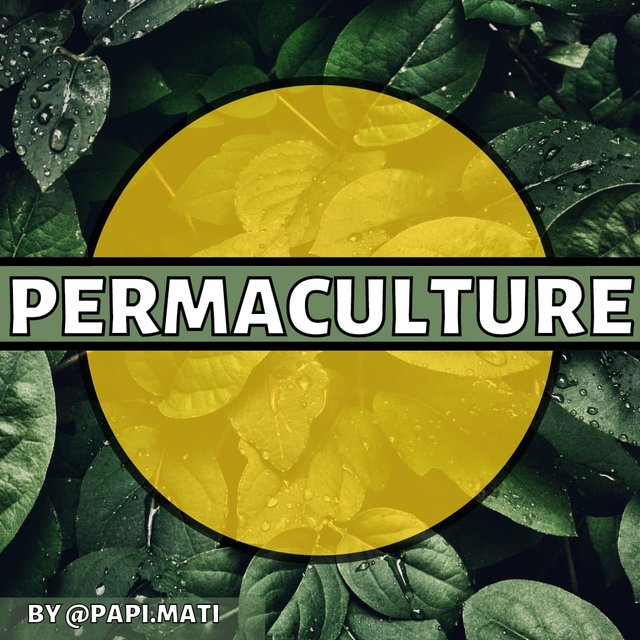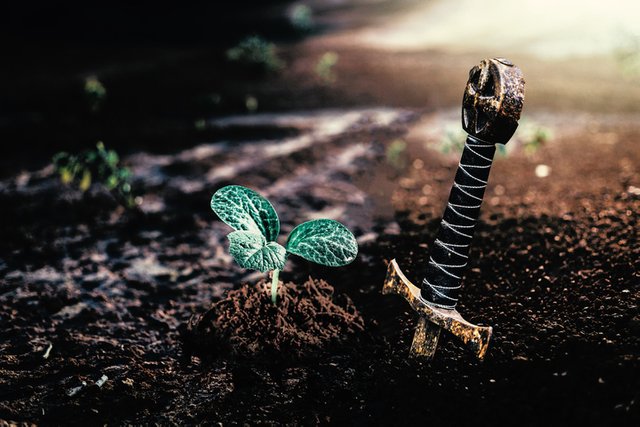
In this lesson, we will describe a few of the most important soil properties which we should be aware of while having a farm or garden. Of course, making the professional soil tests will give us the answer about all the parameters but in the article, I will suggest some natural ways to deduce what pH or soil heating level is just based on the observation of surroundings.
pH
What we can cultivate will depend on the pH of the soil in our garden. Some plants can not stand alkaline soils, others acidic. The ideal pH that allows the cultivation of the greatest variety of plant species is 6.8, good for the vast majority ranges between 6.0 and 7.0, but flora is generally present in soils with pH from 4.5 to 10.
If the soil is too alkaline, which is very rare, you can change it with acidic compost and slurry (see: a lesson about compost). You can also mix needle litter with acid peat or apply sulfates.
Too acidic soil is much more common due to the acid rain phenomenon. It can be slowly changed by liming the substrate, e.g. with algae lime or metallurgical lime (more details in the lessons about mineral fertilizers and lessons with soil components description).
We can check the pH of the soil by sending a probe to the laboratory, but if we want to do it more naturally, we could just observe the nature and deduce the soil pH based on the plant indicators' presence.
| Acidic soil | Alcaline soil |
|---|---|
| heath speedwell | cabbage |
| holly | cauliflower |
| field woundwort | tricolor violet |
| rhubarb | asparagus |
| hempnettle | celery |
| chicory | peas |
| black currant | onion |
| chestnut | spinach |
| endive | broccoli |
| potato | common sainfoin |
| fennel | meadow sage |
| watermelon | spurge |
| shallots | mustard |
| tricolor violet | alfalfa |
| clover | leek |
| sphagnum moss | parsnips |
| Morison's spurry | nettle |
| sorrel | white dead-nettle |
| common heather | field pennycress |
| swamp cranberry | common fumitory |
| stiff clubmoss | broadleaf plantain |
Soil depth
The required depth may vary depending on the plants we have in our garden. Most vegetables and flowers require the soil to be at least 45-65 cm deep.
In the case of trees and shrubs, in most cases, it is 65-100 cm.
There are exceptions, such as pear trees, oaks, and chestnut trees, which take root even 2 meters deep into the soil.
Indicators of the soil depth can be acacias, Prosopis, and the honey locust. They grow in both: deep and shallow soils, but in shallow soils, they will only become stunted in size.
Soil heating and the occurrence of frosts
How quickly the soil heats depends on its composition and color.
The wetter the soil, the more heat it uses to drain, so it heats more slowly. The rate of soil heating can be increased by sprinkling the soil with humus or fine coal. Heat loss can be avoided by using mulching too, which should also be necessary for other reasons (protection against nitrogen loss from the soil, protection against overgrowth of weeds, etc.). Under natural conditions, uncovered soil is very rare. The soil without mulch easily crusts, dries up, requires more watering and fertilizing
Plants that do not tolerate frosts, such as bananas, tomatoes, or potatoes, can be our indicator. When they occur in the wild, you can be sure that the temperatures in this location do not fall below zero throughout the year.
Protection from the wind
It is important, for example, because of the potential mechanical damage or the lower temperature that accompanies unprotected places. However, if we are going to plant wind-pollinated plants, a place sheltered from the wind will be unfavorable for them.
Details on wind screening methods will be described in a separate lesson.
Potential soil contamination and other threats
It is very important to find out what was previously cultivated on the land on which you want to set up a garden and pay attention to the crops in the surrounding plots. Plants and animals can store pollutants from the air and soil, and the process of removing pesticides from the ground, especially DDT, BHC, Aldrin, and Dieldrin, takes at least 15 years.
The worst are the soils after the cultivation of sugar cane, cotton, pineapple, tobacco, banana, and orchards plantations because the most harmful substances are used in their cultivation. The only way to get them off the ground is to wait patiently. In the meantime, the forest can be planted to use the land for purposes other than food production.
Soil and water are also often contaminated due to the unreasonable use of fertilizers in the past (especially nitrogen-rich fertilizers and natural fertilizers), the presence of oil deposits or mines in the vicinity, etc.
Remember - never use untested well water and test the soil before starting any food crops.
It is also worth checking the frequency of fires in the region where you want to buy a plot. This can be done by cutting down the tree and observing the rings. In the years when there were fires in the area, they will be darker on one side from which the wind was blowing, bringing smoke from nearby fires.
Indicators of high concentrations of greenhouse gases in soil:
capeweed, sodom apple, oxalis
All my lessons are shared totally for free with a CC-0 license (which means you can copy my text and share it wherever you want to, without the need to mark me as an author). I hope it will bring you joy.
Previous lessons can be read here:
Fertilizers
2 - types of manure and when to use it
3 - Compost. Basics
4 - advanced composting
Soil and minerals
10 - Boron, Molybdenum, Copper, Magnesium
11 - Zinc, Calcium, Iron and other elements
12 - soil components: sand and clay
13 - soil components: humus
Thank you for reading,
@papi.mati

Very nice post about how to cultivate the soil, also about soil PH, acid or alkaline. This is good information for those who like gardening or are engaged in agriculture. Great.
Downvoting a post can decrease pending rewards and make it less visible. Common reasons:
Submit
Thank you for your comment, I appreciate it!
Downvoting a post can decrease pending rewards and make it less visible. Common reasons:
Submit
You're Welcome my Friend
Downvoting a post can decrease pending rewards and make it less visible. Common reasons:
Submit
It is interesting to know how so many things influence the quality of the soil, the truth was I did not know many things about this subject!
#affable
Downvoting a post can decrease pending rewards and make it less visible. Common reasons:
Submit
I'm glad I could share my knowledge with you! Have a wonderful day!
Downvoting a post can decrease pending rewards and make it less visible. Common reasons:
Submit
One question: but if I use the wrong soil, it means the plant will not grow?
Downvoting a post can decrease pending rewards and make it less visible. Common reasons:
Submit
In most cases it means it will grow much smaller, it won't be as nutritive as planted on the proper soil and with bigger chance to get sick.
It depends what soil you will use though. Sometimes it may not grow at all.
Downvoting a post can decrease pending rewards and make it less visible. Common reasons:
Submit
Thanks for the reply. It is possible to predict the outcome in some ways?
Downvoting a post can decrease pending rewards and make it less visible. Common reasons:
Submit
Every single plant has its own pH tolerance (like 5,5 which is fine for rhubarb but very unpleasant for cherry), the requirement about the soil components, and other stuff which can make them grow better or worse. Even the companion of other plants in that area can be helpful or problematic (allelopathy).
There is no one universal way to describe everything bad that can happen when we grow the plant in the wrong soil. Too low pH increases significantly the Funghi diseases and limits microelements absorption, too sunny place may cause the burn of the plants which prefers half-shaded places, while too much shade can disturb to others. Too much sand, clay, too little hummus were described in the previous lessons about the soil components.
I will do my best to describe the 150 most popular plants in my future lessons, but not at the nearest time, but I believe it's safe to say that the most universal soil, which will work with the majority of plants is the light loam, with pH 6,8, not covered from the sun but partially covered from the wind.
#onepercent #twopercent #argentina
Downvoting a post can decrease pending rewards and make it less visible. Common reasons:
Submit
I'm going to follow your future publications with a lot of curiosity, to learn new knowledge about this interesting and specific topic.
Thanks, for now, for your very detailed answer to my dumb question.
Downvoting a post can decrease pending rewards and make it less visible. Common reasons:
Submit
There are no dumb questions and you make me very happy to see someone is truly interested in my lessons :)
Have a wonderful day!
Downvoting a post can decrease pending rewards and make it less visible. Common reasons:
Submit